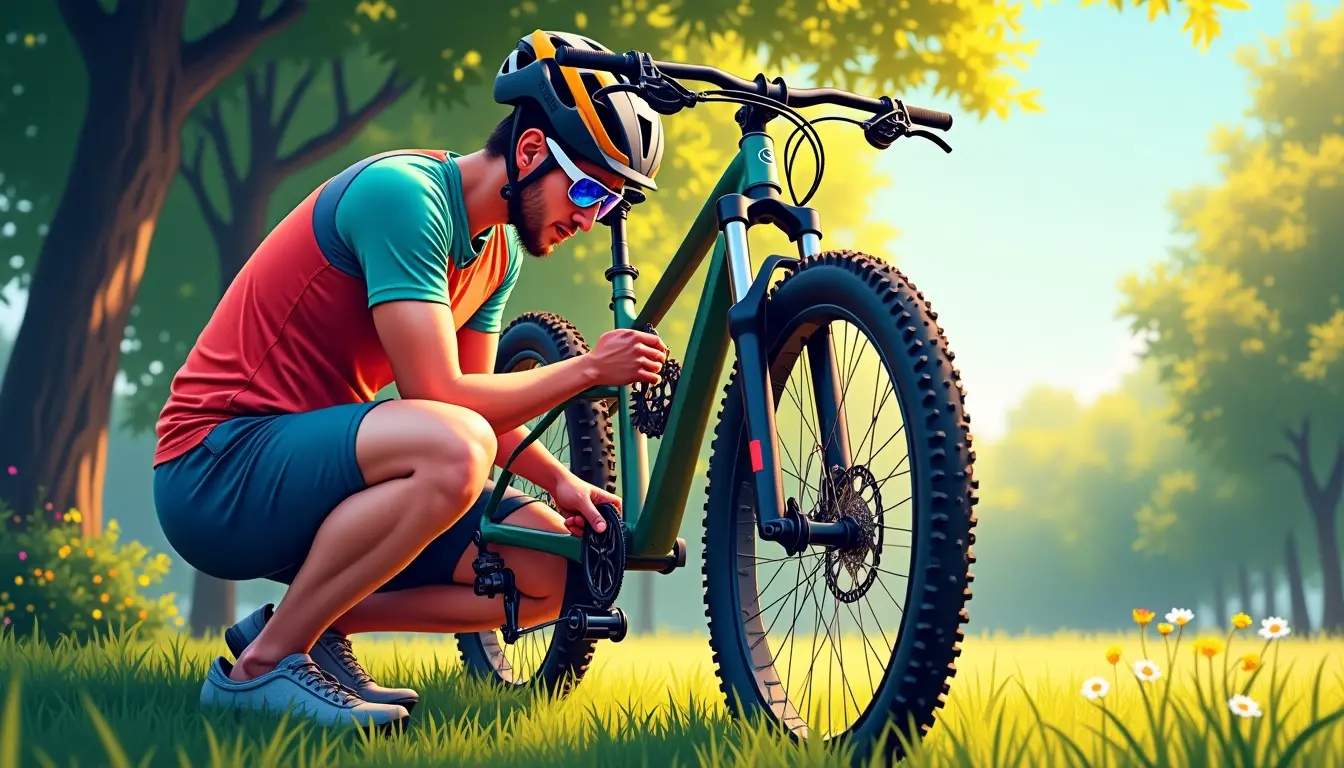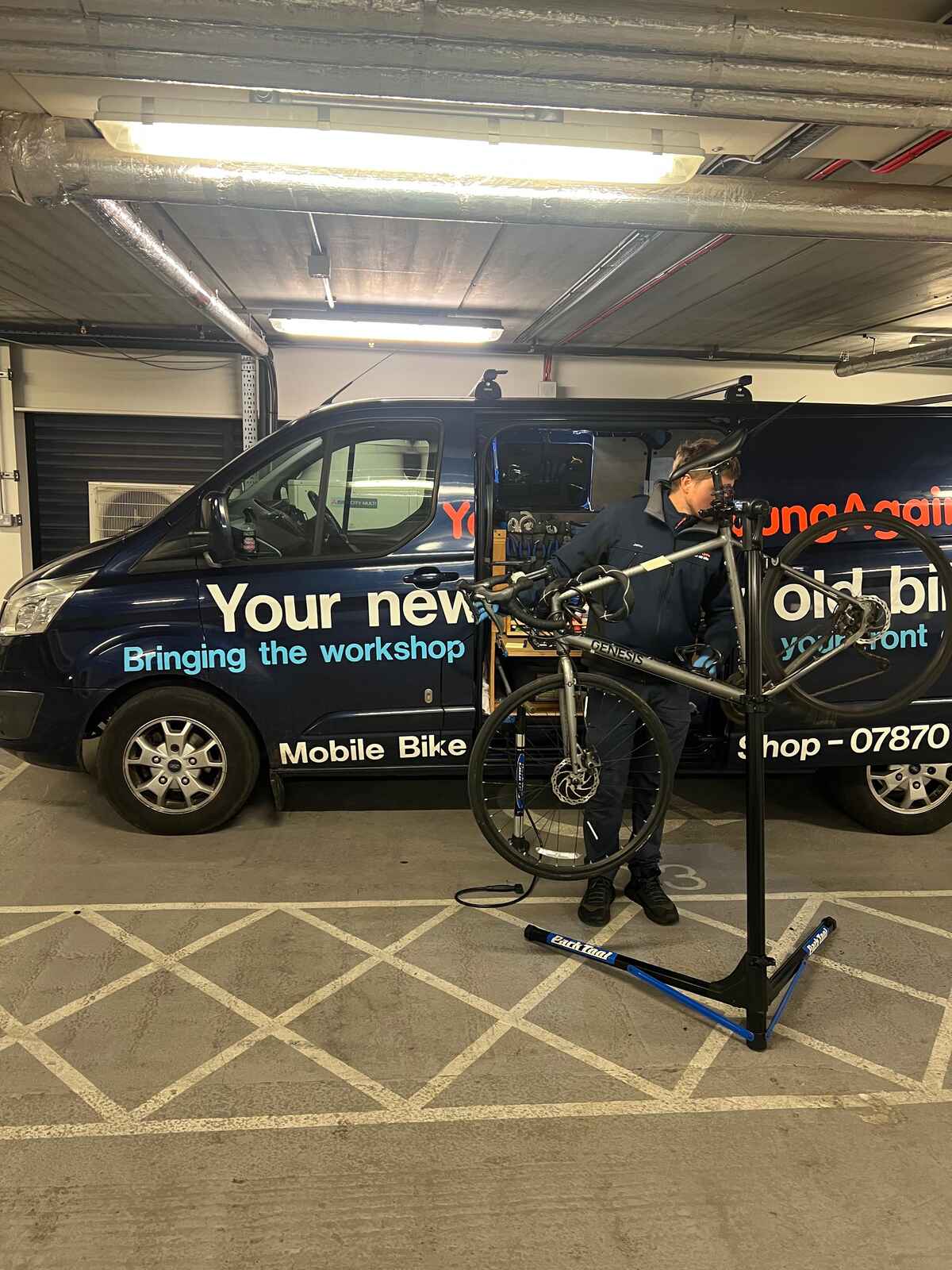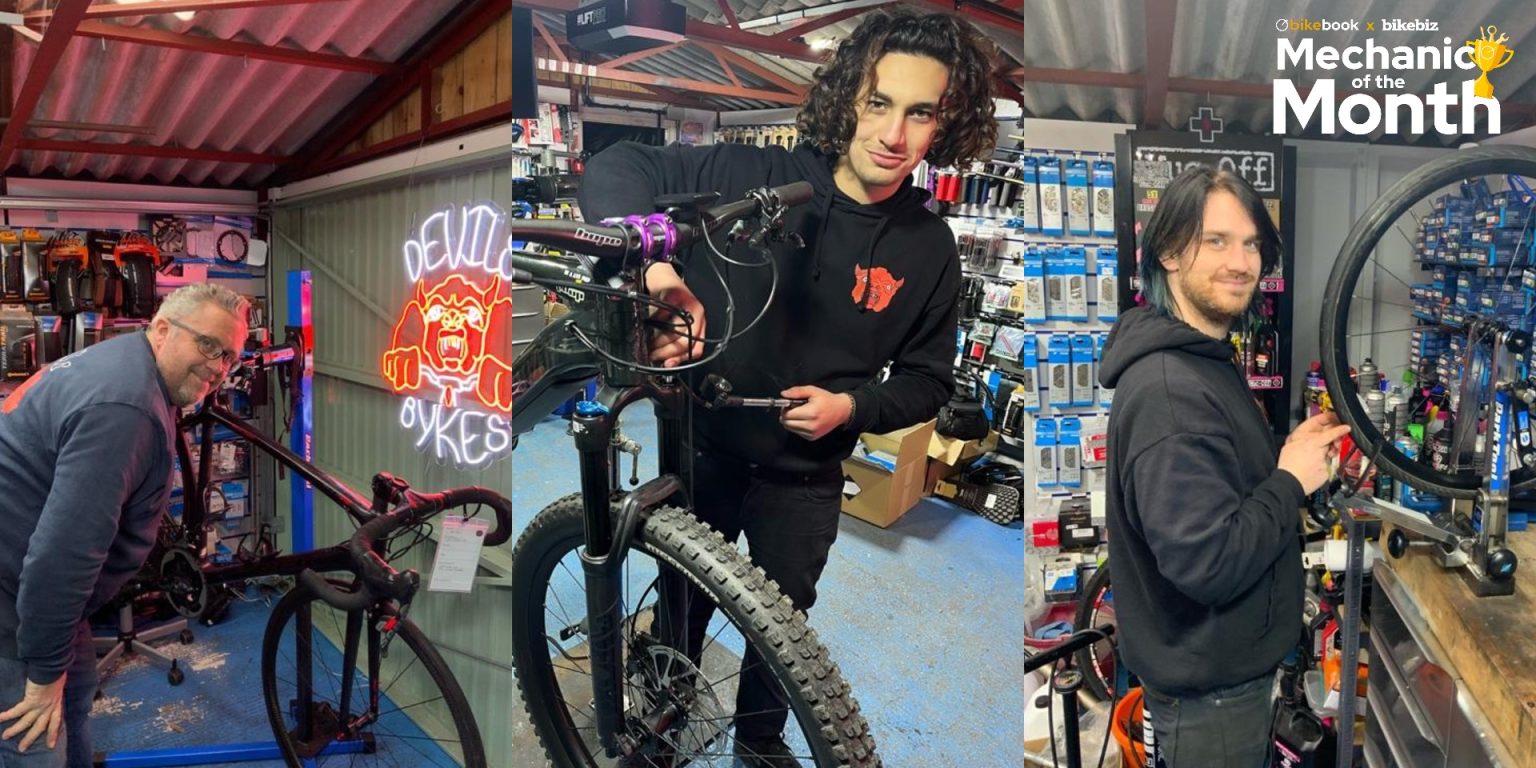December 27, 2025
•
8 minute read
How to Fix Bike Gears That Slip
You've been out on your bike, feeling the wind on your face and the thrill of the ride.
Jake Fieldsend
Founder & CFO
You've been out on your bike, feeling the wind on your face and the thrill of the ride. Suddenly, those dreaded slipping gears dampen your joy. It's frustrating, right? Whether you're on a long road trip or a short commute, gear slippage disrupts your flow and robs you of that smooth ride. So, what's causing your gears to slip, and how can you fix it? Let's pinpoint the culprits behind this common problem and get your bike running smoothly again.
1. Understanding Gear Slippage
1.1 What Causes Gears to Slip?
Slipping gears are a common frustration among cyclists and are usually the result of a few to-the-point causes. If you feel your gears suddenly jump or don't catch as expected, it could be due to:
- Cable tension: Too tight or too loose cables can directly affect how your derailleur shifts, causing slippage.
- Derailleur alignment: A misaligned derailleur can't move your chain smoothly between gears.
- Worn components: Over time, cogs, chains, and derailleurs wear out, reducing their ability to grip and shift properly.
Most often, identifying these issues early can save you a world of hassle and improve your biking experience significantly.
Fun fact: Did you know that poorly maintained gears can also increase your energy expenditure? Imagine pedalling harder just because of inefficient gear function!
1.2 The Role of Maintenance in Preventing
Slippage
Regular maintenance isn’t just an option; it’s vital for preventing gear slippage. Keeping your bike in tip-top shape not only ensures smooth rides but also prolongs the life of your beloved bicycle. Here's what you can do:
- Regular checks: Examine your cables, derailleur, and chain regularly. Look for signs of wear or misalignment.
- Cleaning and lubricating: Dirt buildup leads to resistance; a clean and lubed chain means easier, cleaner shifts.
- Scheduled servicing: Even if you’re an avid do-it-yourselfer, occasional professional check-ups can catch sneaky problems.
Exercising these practices keeps your bike efficient and your rides joyful, minimising surprises on those long rides.
Pro-tip: Keep a quick maintenance schedule – weekly for cleaning and monthly for a full check-up. It’ll soon become as routine as your biking habit, enhancing longevity and performance.
1.3 How a Slipping Gear Affects Your Ride
The effects of a slipping gear extend beyond mere annoyance. When your gears aren’t functioning seamlessly, it can lead to:
- Reduced cycling efficiency: More effort for less propulsion equals a lesser experience.
- Noise pollution: Clicking and clattering sounds aren’t just irritating—they’re signals of potential damage.
- Cycle imbalance: Unexpected gear changes can affect your balance, especially dangerous during tricky manoeuvres.
Understanding these impacts motivates you to address the issue promptly, keeping your cycling efficient and enjoyable.
Real-world example: Picture a race scenario where every second counts. A gear slip not only slows you down but could cost you the entire competition. Keeping gears in check ensures peak performance.
By grasping the importance of well-maintained gears, you can save time, effort, and improve cycling pleasure each time you set out on your two wheels.
2. Step-by-Step Guide to Fixing Slipping Gears
2.1 Check and Adjust the Derailleur
When you're riding and notice your bike gears are slipping, likely, your derailleur isn't properly aligned. This misalignment can cause the chain to skip over cogs instead of settling smoothly. Start by ensuring your bike is securely placed on a repair stand.
- Inspect the derailleur hanger: If it's bent, use a derailleur hanger alignment tool to correct it.
- Examine the positioning: Ensure the derailleur is directly in line with the sprockets.
- Adjust the limit screws: These screws, marked as 'H' for high and 'L' for low, keep the chain from derailing. Fine-tune them to prevent slipping.
Pro-tip: Always shift into the smallest and then the largest cog to check that the derailleur moves without obstruction.
Fun fact: Misaligned derailleurs can chip away at chain cogs over time — regular adjustments can prolong your gear's lifespan.
2.2 Replacing Worn Out Components
Your slipping gears might be due to worn-out components that need replacing. Chainrings, cassettes, or chains with worn teeth result in poor engagement between the chain and the cogs.
- Inspect the chain: Use a chain wear tool — a simple way to check if your chain exceeds recommended stretch limits.
- Examine the cassette: Look for 'shark-fin' shaped teeth on the cogs, a sure sign that replacement is required.
- Check the chainrings: Worn chainrings can also contribute to slippage; look for tooth deformities.
Pro-tip: Replacing all components simultaneously (chain, cassette, chainrings) may be costly but ensures synchronicity and longevity.
Interesting tidbit: A quality chain averages between 2,000 to 3,000 miles before requiring replacement under regular conditions.
2.3 Correct Cable Tension Adjustment
Cable tension might seem minor, but it significantly affects gear performance. If your cable tension isn't right, your chain can struggle to shift correctly.
- Shift through all gears to pinpoint where adjustments are needed.
- Locate the barrel adjuster on your derailleur or shifter. Turning it clockwise decreases tension, while counterclockwise increases it.
- Fine-tune the tension until shifts are smooth across all gears.
Pro-tip: The barrel adjuster is your friend for on-the-fly adjustments during a ride. Familiarise yourself with its operation for optimum outcomes.
Did you know? Riding in wet or gritty conditions degrades cables quicker, prompting more frequent checks for optimal performance.
Bikebook offers a practical solution if these tasks seem daunting. You can easily search for experienced local mechanics using our platform. Finding a suitable professional can save time and eliminate the frustration of DIY bike repairs that don’t go as planned.
3. When to Seek Professional Help
from Local Mechanics
3.1 Identifying Complex Gear Issues
When bike gears keep slipping despite your best efforts, it's a sign you might be dealing with complex issues. These could be internal hub malfunctions or severely misaligned derailleurs. Recognising these problems early can save you time and money. You shouldn't hesitate to seek out professional bike mechanics if:
- You notice unusual noises: Clanking or grinding might indicate serious derailleur damage.
- There's constant chain skipping even after cable tension adjustments.
- You're unsure about part replacements, especially with unfamiliar electronic shifting systems.
Pro Tip: Before you spend on replacements, confirm the exact issue through a professional assessment; misdiagnosing often leads to unnecessary expenses.
In some instances, drastic weather changes affecting the metal components can lead to unfamiliar gear behaviour, making it a bit tricky to diagnose. If you face such specific issues, remember, you're not alone. Many cyclists are caught in this fix, especially after a long winter or rainy season. Mechanics have the right diagnostic tools and experience to pinpoint these unusual faults.
3.2 How Bikebook Can Assist in Finding a Local Mechanic
Feeling overwhelmed sourcing the right mechanic? That's where Bikebook comes into play. Our platform is meticulously curated to connect you with local mechanics swiftly and conveniently. Here’s how Bikebook can simplify your search:
- Simple comparison: Evaluate different mechanics based on real reviews and pricing.
- Extensive network: Access thousands of skilled mechanics who specialise in various repair needs.
- User-friendly interface: Our platform is easy to navigate, saving you time.
- Local expertise: Stay away from impersonal national service chains; opt for experienced local professionals.
By using Bikebook, you can make informed decisions and confidently choose a service tailored to your biking needs. Our goal is to eliminate frustration associated with finding reliable bike services.
Pro Tip: Start by entering your postcode on Bikebook to instantly see available experts for your precise requirements.
3.3 The Benefits of Regular Professional Servicing
Even if you're adept at basic bike maintenance, regular professional servicing is vital for optimal performance. Professional mechanics not only fix problems but also offer preventative care. Here’s what you gain:
- Comprehensive check-ups: Identify concealed issues before they turn costly.
- Precision tuning: Achieve the most efficient, smooth shifting mechanics.
- Longevity: Regular checks prolong your bike's lifespan.
- Expert insights: Gain access to bespoke advice tailored to your bike's setup.
Regular visits to skilled professionals ensure that your bike remains at its peak performance, providing a safer and more enjoyable ride. If routine maintenance feels daunting, let a professional handle those complexities and enjoy a trouble-free cycling experience.
Pro Tip: Consider setting a fixed schedule for bike checks, much like a car service. Routine inspection keeps your bike at optimal efficiency, preventing unexpected breakdowns.
In summary, while there are times you can handle gear slippage issues yourself, knowing when to hand off the task to professionals can save you from difficulties and unwanted expenses. Financially, using platforms like Bikebook streamlines your search for help at the local level, ensuring not only peace of mind but also a significantly better cycling experience.
Discover great local bike services using Bikebook's platform to connect with qualified mechanics near you.
Frequently Asked Questions
How to stop gears from slipping on a bike?
Ensure derailleur adjustment and cable tension are correctly set. Regularly inspect for worn-out components and keep the drivetrain clean.
How to fix shifting gears on a bike?
Start by cleaning and lubricating the chain. Check gear cable tension and adjust the derailleur alignment carefully. Replace damaged parts if needed.
Why does my bike chain keep slipping gears?
Common reasons include incorrect derailleur settings, worn-out components like the chain or cassette, and loose cable tension. Regular upkeep and immediate repairs are important.
How to fix a slipping chain on a bike?
Inspect and clean the chain, then adjust the derailleur settings. Check for wear, particularly with the chain and cassette, replacing if necessary.



